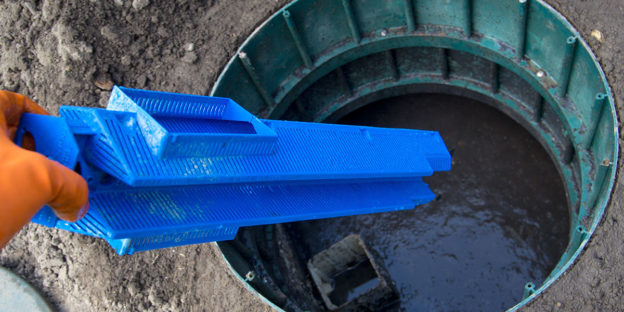The U.S. Government Department of Health, Education, and Welfare Public Health Service says, “A septic tank system will serve a home satisfactorily only if it is properly designed, installed, and adequately maintained. Even a good system which does not have proper care and attention may become a nuisance, and burdensome expense.”
Septic system maintenance involves two main parts. First, the sludge that accumulated in the bottom of the tank must be pumped out periodically. Solids continually build up over time at the bottom of the septic tank. This is because the inorganic waste that is not biodegradable will settle to the bottom of the tank creating a sludge layer. If the sludge is not pumped out it will accumulate until it overflows into the leaching field where it will cause problems and can cause the system to clog. If this happens your system may need to be replaced at a great expense and inconvenience.
Second, System maintenance involves having the bacteria necessary for organic solids digestion. If bacteria-killing chemicals are put into the drain (as they frequently are) the bacteria should be replenished. If the bacteria level is too low or non existent, the solids will not be digested properly. The solids will build up more rapidly and can clog the system.
key reasons to maintain your septic system are to help limit polluted water from entering the water table and to save money by not having to replace your system. Failed septic systems are expensive to repair and replace, and poor maintenance is often the culprit. Having your septic system inspected regularly is a time and money saver when you consider the cost of replacing the entire system. Your system will need pumping depending on how many people live in the house and the size of the system. An unusable septic system or one in disrepair will lower your property value and could pose health and legal issues.
Filters
Septic tank filters are used to help keep solid particles in the septic tank and out of the leaching system. They are located on the outlet side of the tank where the tee is normally placed. Some filters fit inside the tee and some filters replace the tee. By trapping solid particles larger than 1/16 to 3/16 of an inch in size, the filter protects all downstream components, like the pump and drainfield, from damage.
Do’s & Don’ts
- Don’t flush inorganic materials such as cigarettes, sanitary napkins, disposable diapers ect. down the drain.
- Don’t overload your septic system by over using water. Use water sparingly.
- Don’t put bacteria killing chemicals such as medicines, paint, thinner, disinfectant, pesticides, gasoline, oil, antifreeze, etc down the drain.
- Don’t drive or park over your system.
- Don’t plant trees or shrubbery over your system. Roots can damage your system.
- Do keep good repair & maintenance records.
- Do check all plumbing fixtures for leaks.
- Do have your system pumped or inspected every 2 to 3 years.
- Do remove your garbage disposal. Unless your system was designed for one, then use sparingly.
- Do know where your septic system is located so that you can visually notice changes of appearance on the surface.

